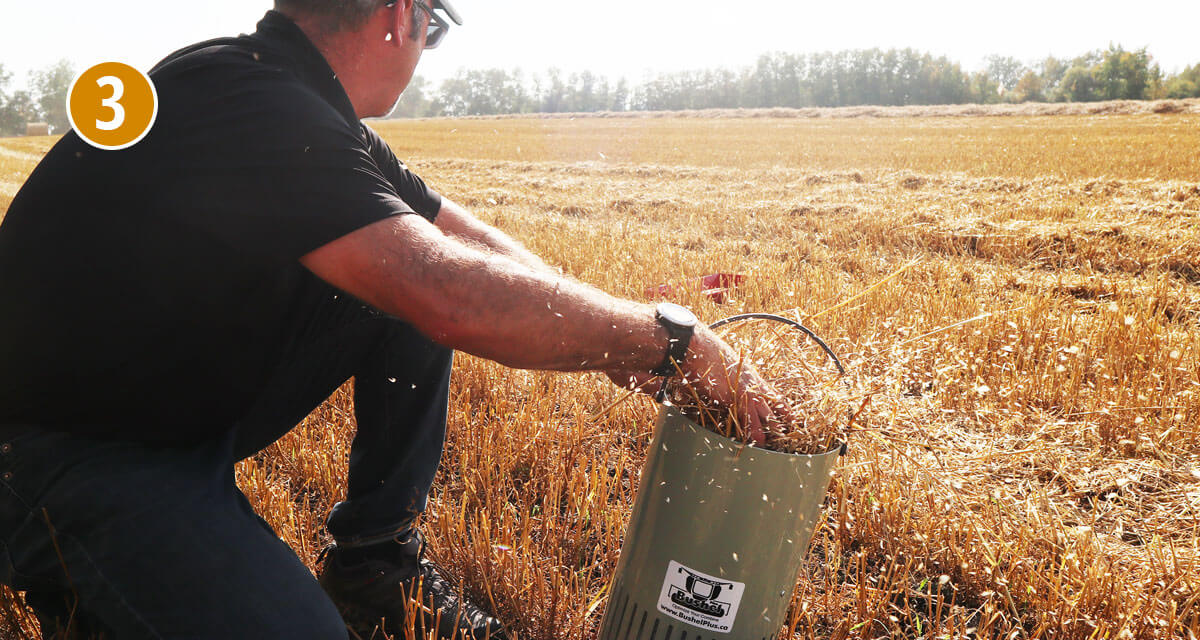Report on PFAS Contamination in New Mexico and its Implications for Sustainable Development Goals
Executive Summary
The State of New Mexico has initiated legal action against the United States Air Force (USAF) concerning significant per- and polyfluoroalkyl substances (PFAS) contamination originating from Cannon Air Force Base. This report analyzes the conflict through the framework of the United Nations Sustainable Development Goals (SDGs), highlighting severe impacts on public health, water resources, economic stability, and institutional integrity.
Impact on Health, Water, and Sanitation: A Challenge to SDG 3 and SDG 6
The contamination directly undermines SDG 3 (Good Health and Well-being) and SDG 6 (Clean Water and Sanitation) by threatening the fundamental right to safe drinking water and a healthy environment.
- Source of Contamination: PFAS-laden firefighting foam used at Cannon Air Force Base.
- Environmental Impact: A four-mile chemical plume has contaminated the aquifer beneath Clovis, New Mexico.
- Water Contamination Levels:
- Over 100 private wells have been poisoned.
- One municipal well serving the 40,000 residents of Clovis has been taken offline.
- Surface water levels of PFAS were found to be 27,000 times higher than US Environmental Protection Agency health advisories.
- Public Health Risks (SDG 3): PFAS, known as “forever chemicals,” are linked to severe health issues, including cancer, birth defects, kidney disease, and decreased immunity, posing a direct threat to community well-being.
Socio-Economic and Community Disruption: Contravening SDG 8 and SDG 11
The pollution has caused significant economic and social harm, impeding progress toward SDG 8 (Decent Work and Economic Growth) and SDG 11 (Sustainable Cities and Communities).
- Agricultural Damage (SDG 8):
- Thousands of acres of crops relying on the contaminated aquifer are at risk.
- Local dairy farmers were forced to euthanize approximately 3,500 cows due to contaminated milk, destroying livelihoods.
- Community Impact (SDG 11): The USAF’s failure to remediate the pollution has created an unsustainable situation for the Clovis community, forcing state taxpayers to bear the financial burden of a crisis they did not create.
Governance and Justice Failures: A Setback for SDG 16 and SDG 17
The prolonged dispute highlights a failure of institutional accountability and partnership, which are central to SDG 16 (Peace, Justice and Strong Institutions) and SDG 17 (Partnerships for the Goals).
- Institutional Conflict: The USAF has refused to comply with state orders and fines, including a $70,000 fine for a recent leak of 7,000 gallons of PFAS-contaminated wastewater.
- Legal Battle:
- The USAF sued New Mexico in federal court, challenging the state’s authority and the classification of PFAS as a hazardous substance.
- In response, the New Mexico legislature amended state law to explicitly designate the foam as hazardous.
- The state’s new lawsuit seeks to compel the USAF to act, demonstrating a breakdown in cooperative governance between state and federal entities (SDG 17).
- National Pattern: This inaction is part of a broader pattern of delayed remediation at over 700 contaminated military bases nationwide, despite Congress allocating approximately $3 billion annually for cleanup.
Call for Responsible Remediation: Aligning with SDG 12 and SDG 15
New Mexico’s lawsuit demands accountability and remediation, reflecting the principles of SDG 12 (Responsible Consumption and Production) and SDG 15 (Life on Land).
- State Demands: The lawsuit calls for the USAF to adhere to the “polluter pays” principle by:
- Providing water treatment systems or connections to municipal sources for affected residents.
- Implementing pollution controls to contain the plume and protect land and ecosystems (SDG 15).
- Compensating property owners for damages incurred.
- Responsible Management: The case underscores the critical need for responsible management of hazardous substances and remediation of environmental damage to protect terrestrial ecosystems, groundwater, and human health for future generations.
Which SDGs are addressed or connected to the issues highlighted in the article?
SDG 3: Good Health and Well-being
- The article directly connects the PFAS chemical pollution to severe health risks, stating they “have been linked to cancer, birth defects, decreased immunity, high cholesterol, kidney disease and a range of other serious health problems.” The contamination of drinking water for “tens of thousands of people” directly threatens public health.
SDG 6: Clean Water and Sanitation
- The central theme of the article is the contamination of water resources. It highlights how PFAS pollution has “tainted drinking water,” created a “four mile chemical plume in the aquifer,” poisoned “over 100 private wells,” and taken out “one municipal well that serves Clovis, a city of 40,000 people.”
SDG 12: Responsible Consumption and Production
- The issue stems from the use and improper management of hazardous materials. The article discusses the “Pfas-laden firefighting foam” and the military’s process of “phasing it out.” The leak of “7,000 gallons of Pfas-contaminated wastewater” points to a failure in the sound management of chemical waste.
SDG 15: Life on Land
- The pollution’s impact extends beyond human water sources to the broader ecosystem. The article notes that the contamination affects “thousands of acres of crops that rely on the aquifer for water” and has “poisoned dairy cows,” leading to the euthanasia of about 3,500 animals. This demonstrates the degradation of terrestrial ecosystems and agricultural land.
SDG 16: Peace, Justice and Strong Institutions
- The article details a significant conflict between a state government and a federal military institution. New Mexico is suing the air force for its “refusal to comply with orders to address” the pollution. This highlights a breakdown in institutional accountability and the use of legal systems to seek justice and enforce environmental laws. The air force is accused of doing “nothing of substance” and “dragging its feet,” questioning its effectiveness and accountability.
What specific targets under those SDGs can be identified based on the article’s content?
-
Target 3.9: By 2030, substantially reduce the number of deaths and illnesses from hazardous chemicals and air, water and soil pollution and contamination.
- This target is directly relevant as the article focuses on the health risks posed by PFAS, which are hazardous chemicals causing water and soil pollution. The state’s lawsuit aims to mitigate these health impacts on its population.
-
Target 6.1: By 2030, achieve universal and equitable access to safe and affordable drinking water for all.
- The contamination of private and municipal wells in Clovis demonstrates a lack of safe drinking water for the affected community. The lawsuit’s demand for water treatment systems or connection to municipal sources is a direct effort to achieve this target for the residents.
-
Target 6.3: By 2030, improve water quality by reducing pollution, eliminating dumping and minimizing release of hazardous chemicals and materials.
- The article describes a “four mile chemical plume” from the release of PFAS, a hazardous chemical. The state’s efforts to force the air force to “remediate the plume” and implement “pollution controls” align perfectly with this target.
-
Target 12.4: By 2020, achieve the environmentally sound management of chemicals and all wastes throughout their life cycle… and significantly reduce their release to air, water and soil in order to minimize their adverse impacts on human health and the environment.
- The core problem is the failure to manage PFAS-laden firefighting foam, resulting in its release into the environment. The military’s ongoing effort to “phase it out” and the state’s demand for remediation reflect the need to achieve this target.
-
Target 15.3: By 2030, combat desertification, restore degraded land and soil, including land affected by… contamination.
- The contamination of the aquifer has degraded “thousands of acres of crops” and the surrounding land. The state’s lawsuit demanding remediation of the plume is an action aimed at restoring this contaminated land and soil.
-
Target 16.6: Develop effective, accountable and transparent institutions at all levels.
- The article critiques the air force as an institution, noting it has “refused to comply with most state orders,” “managed to litigate against the state,” and is “dragging its feet” on cleanup. This highlights a lack of accountability and effectiveness, which this target aims to address.
Are there any indicators mentioned or implied in the article that can be used to measure progress towards the identified targets?
- Concentration of pollutants in water: The article explicitly states that PFAS levels in surface water were “about 27,000 times higher than US Environmental Protection Agency drinking water limits.” Measuring the reduction of this concentration is a direct indicator of progress towards Target 6.3.
- Number of people with access to safe water: The article mentions “tens of thousands of people” and “over 100 private wells” are affected. An indicator of progress for Target 6.1 would be the number of households and individuals provided with filtration systems or connected to safe municipal water sources.
- Area of contaminated land and water: The article specifies a “four mile chemical plume” and “thousands of acres of crops” affected. Tracking the reduction in the size of this plume and the area of restored agricultural land would measure progress towards Target 15.3.
- Volume of hazardous waste released: The mention of a “7,000 gallons of Pfas-contaminated wastewater” leak serves as an indicator for waste management failures (Target 12.4). Tracking the prevention of such incidents would indicate progress.
- Economic and agricultural losses: The article notes that “3,500 cows” were euthanized. An indicator of impact and subsequent recovery could be the reduction in livestock and crop losses due to contamination.
- Compliance with legal and regulatory orders: The air force’s “refusal to comply with orders” and its refusal to pay a “$70,000 state fine” are clear indicators of institutional non-compliance. Progress towards Target 16.6 could be measured by the rate of compliance with state remediation orders and legal judgments.
SDGs, Targets, and Indicators Analysis
| SDGs | Targets | Indicators |
|---|---|---|
| SDG 3: Good Health and Well-being | 3.9: Substantially reduce illnesses from hazardous chemicals and water/soil pollution. |
|
| SDG 6: Clean Water and Sanitation |
6.1: Achieve universal access to safe drinking water.
6.3: Improve water quality by reducing pollution and minimizing the release of hazardous chemicals. |
|
| SDG 12: Responsible Consumption and Production | 12.4: Achieve environmentally sound management of chemicals and wastes. |
|
| SDG 15: Life on Land | 15.3: Restore degraded land and soil affected by contamination. |
|
| SDG 16: Peace, Justice and Strong Institutions | 16.6: Develop effective, accountable, and transparent institutions. |
|
Source: theguardian.com







